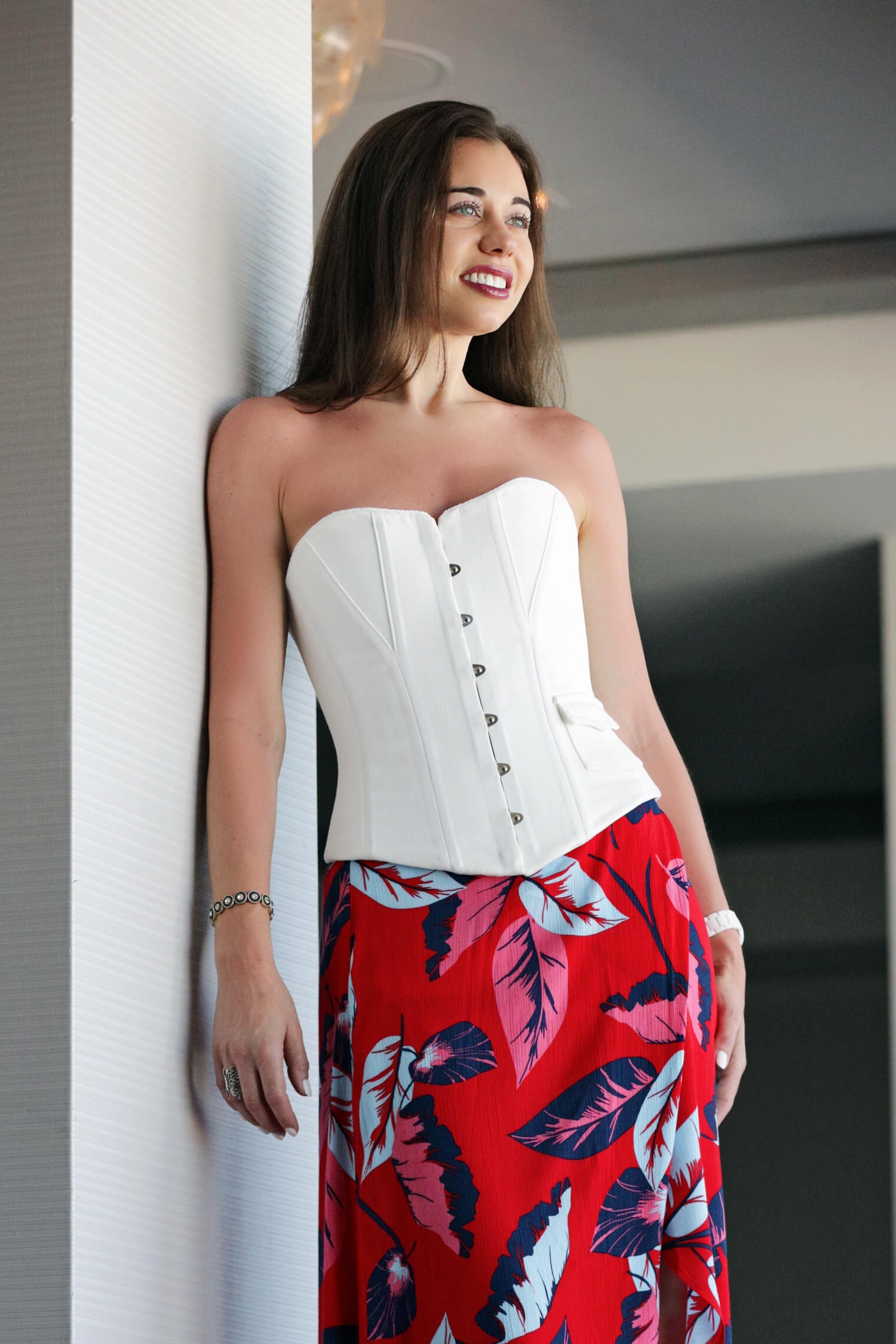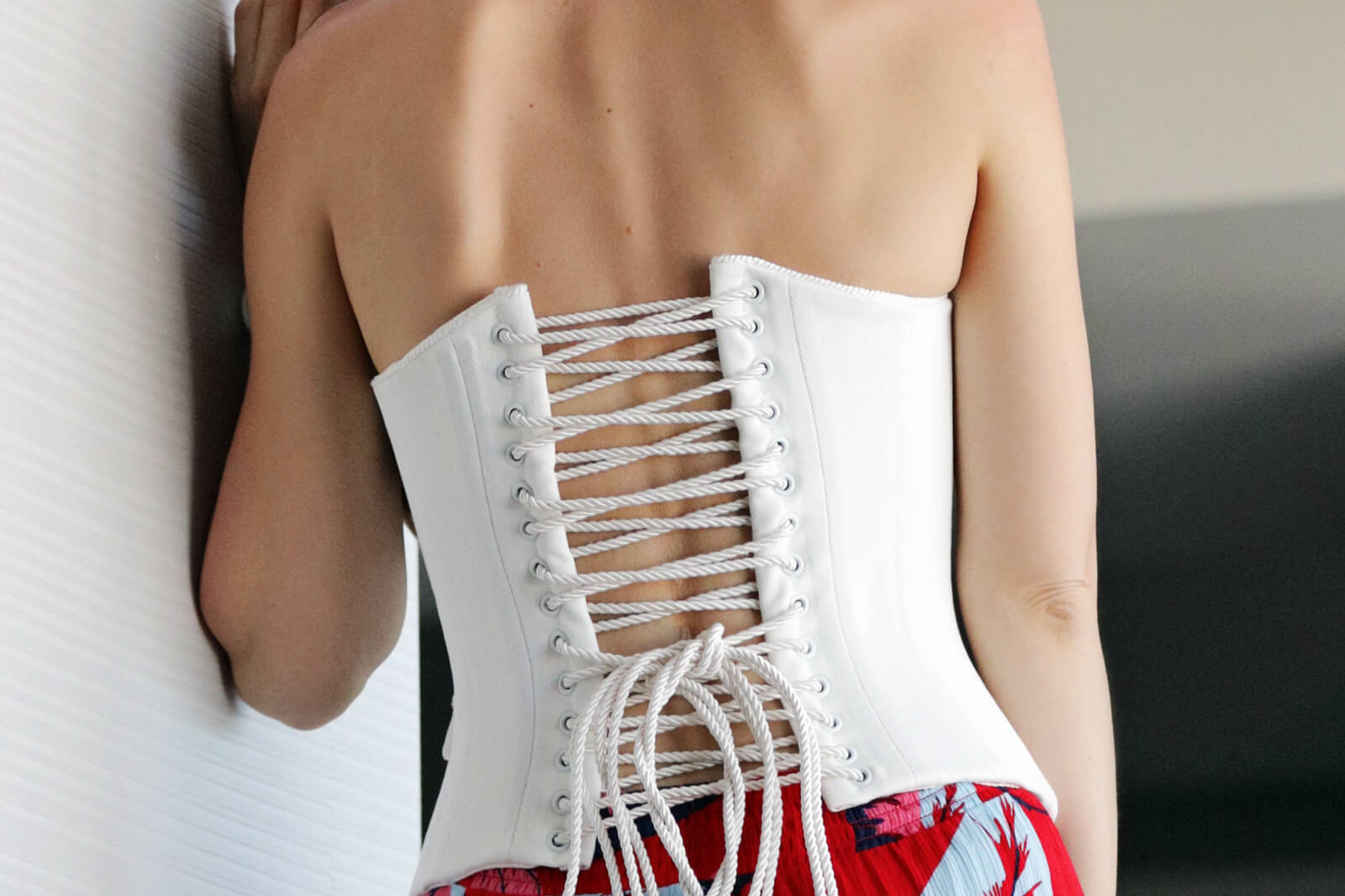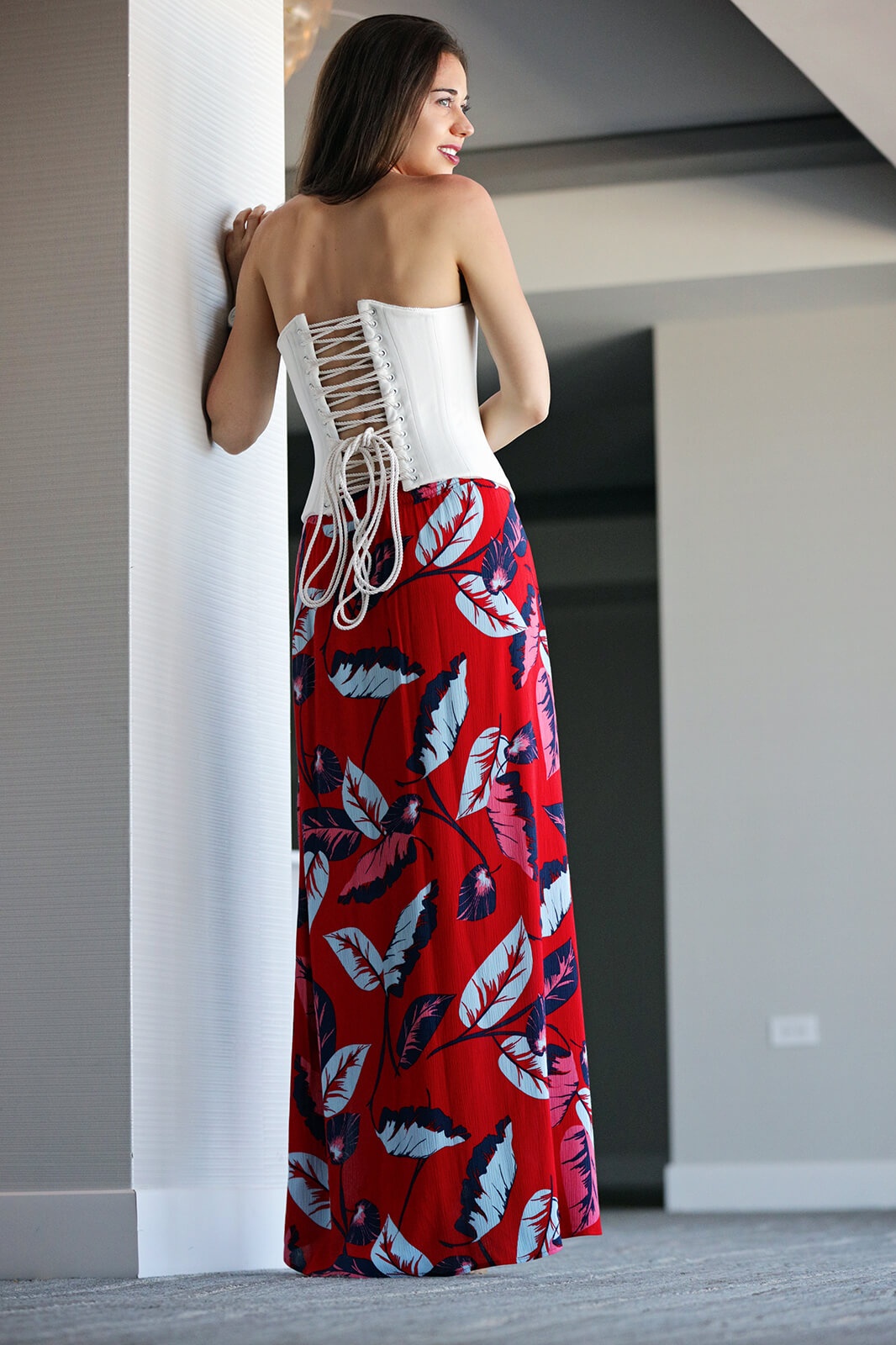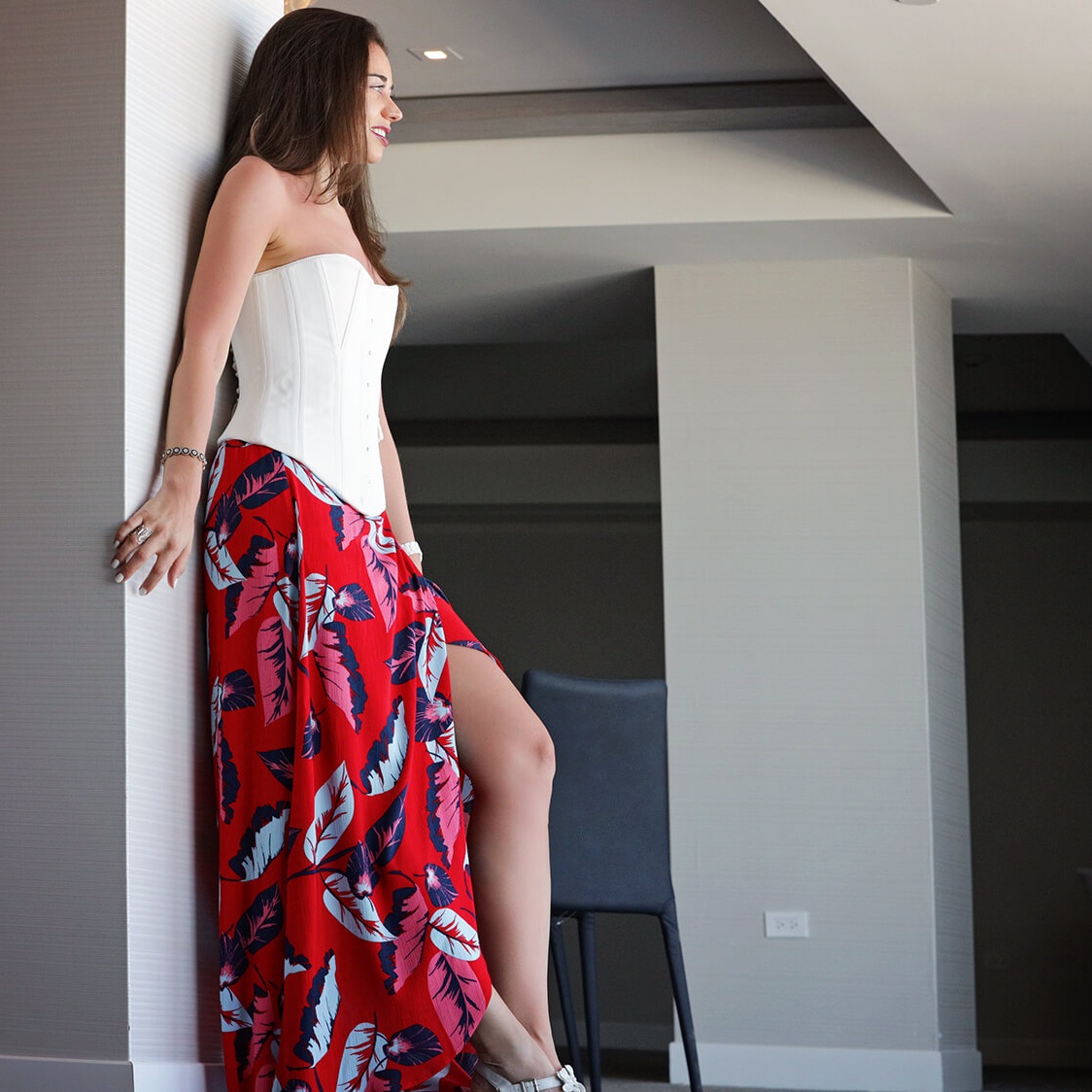Corset Myths and Perspective Truths
Fable
Corset Myths and Perspective Truths
Historical clothing and costuming are subjects that are littered with misconceptions, fables, myths and lies. Foremost the garment that intrigues modern society the most is THE CORSET. Is the corset a symbol of sexuality and a painful instrument of torture to which women will go to great lengths to achieve the ideals of fashion? Rumors are told of women who tight-laced into a minuscule size waist, induced fainting spells, and had shortness of breath and disfigurement. There are whispers of women who surgically removed their lower ribs and displaced their organs as to attain a smaller waist. Are corsets the physically damaging tactical symbol of historical female oppression?
In 1793 Doctor Samuel Thomas von Sömmerring wrote an essay named “The Effects of the Corset”. He argued that the back-laced corset constituted a health hazard by compressing the ribs and other internal organs leading to tuberculosis, cancer, and scoliosis, or curvature of the spine. However, his conclusions were emotionally conditioned and it became apparent through his failure to ascribe the corset and later disregarded the corset as etiology.
.,,Corsets help support the back and can ease back pain.—Stella
Fabrication
Corset Myths and Perspective Truths
Corsets did not cause scoliosis. Indeed, if anything, corsets probably helped the condition. It is not surprising, however, that some doctors thought corsets were to blame, because scoliosis was more common in women than men. Today, people suffering from curvature of the spine are still put into medical corsets as part of the treatment for the disease, as they were in the past. Corsets help support the back and can ease back pain.1
There is no evidence at all that the widely believed myth of ultra-fashionable Victorians having their lower ribs removed in order to facilitate lacing their waists to a smaller size existed in reality. There is a great deal of circumstantial evidence that such an operation could not have been performed in the nineteenth century without the patient being at serious risk of dying. Anesthesia was also unavailable until the middle of the century and it would have been very difficult for a woman to find a trained surgeon willing to undertake such a hazardous operation for cosmetic purposes. By wearing a tight corset day and night you are able to reduce your waist and when the corset is taken off, your ribs expand again, as does your flesh.2
Perspective Truth
Corset Myths and Perspective Truths
People believed women fainted while wearing a corset due to the lack of oxygen, feeling suffocated, or not being able to breathe. Fainting actually had to do with dehydration, over-heating in the layers of clothing women wore, abrupt changes in blood pressure and not getting enough blood in the brain. If a woman has very low blood pressure to begin with, puts on a corset and ties it very tightly, it’s going to increase the blood pressure in the lower part of her body while decreasing the blood pressure in the upper part of her body. So her brain is not getting enough blood pressure, which means she is not getting enough oxygen in her brain and therefore she faints.
So why do these myths continue to flourish? Tight-lacing and Corsetry are not synonymous. Simply because a woman or man is wearing a corset does not mean she or he is or has to lace down to such extremes. As in all things, misuse or overuse can become a problem. Many of the misconceptions around the negative effects of wearing corsets are related to improper use and extremists. We at Champagne Corsets & Designs will guide you to ensure you are lacing properly and responsibly so you can benefit from the truly amazing effects the corset can offer. Read more about the Minimalist corset featured in this article.
Do you currently own a corset and would like help styling it? Or perhaps you’re ready for a custom handmade corset of your own. Let’s get started! I am happy to answer any questions you may have. Please comment below.
Cheers!
1 2 The Corset: A Cultural History, by: Valerie Steel
Photos by Eric Stella Santiago
Images enhanced by Intimatology








I got all the way through this article before realizing it was written this year. I am SO EXCITED to see a corset blog being updated in real time. Unfortunately, The Lingerie Addict has stopped updating their corset section, and Lucy’s blog posts seem to be declining in frequency. I hope you plan to continue adding blog posts, as I would be ecstatic to continue reading them!
Hi Bailey, thank you so much for your inspiring and kind comments. Your support means so much!
I love that you take the time to prove the myths and truths of corsets! I definitely think people are unaware of how beneficial they are! Keep shedding light on them – I love your content!